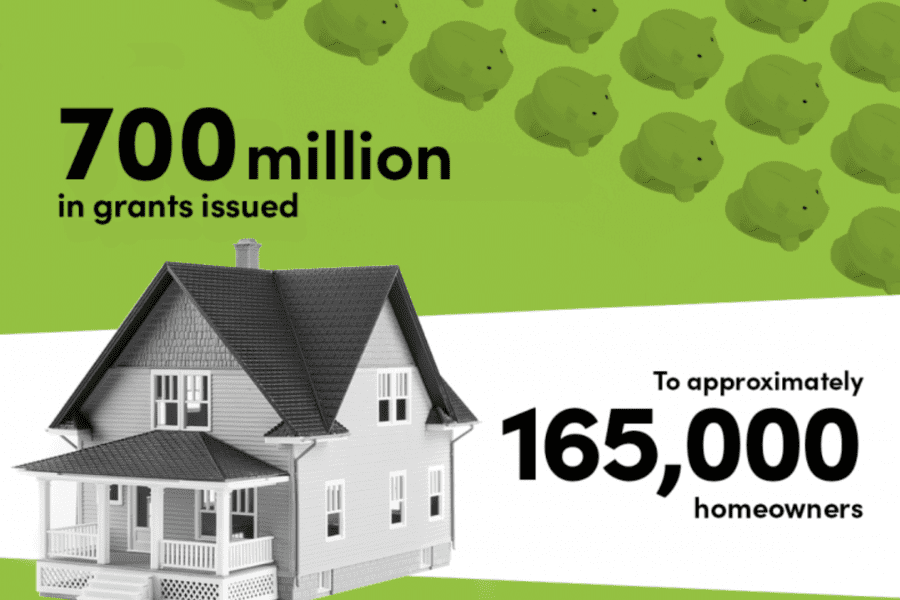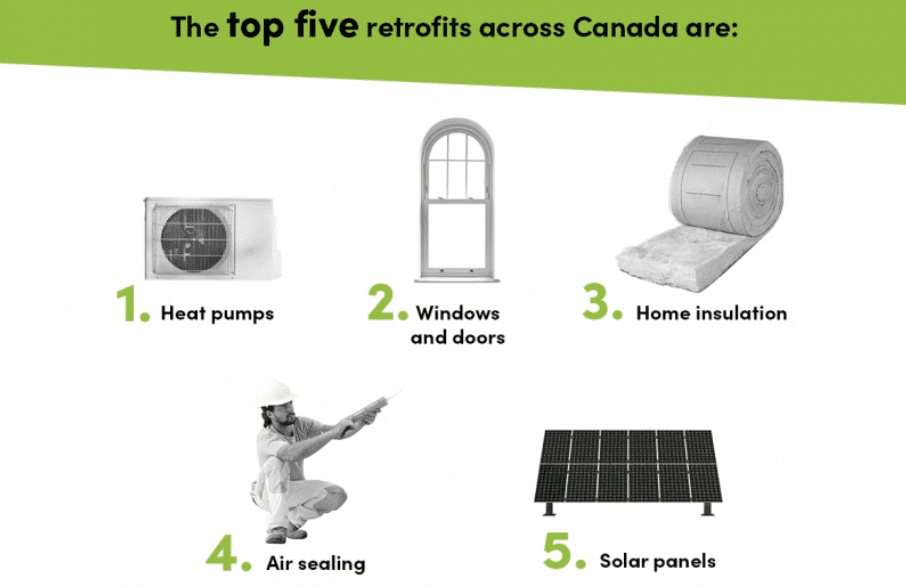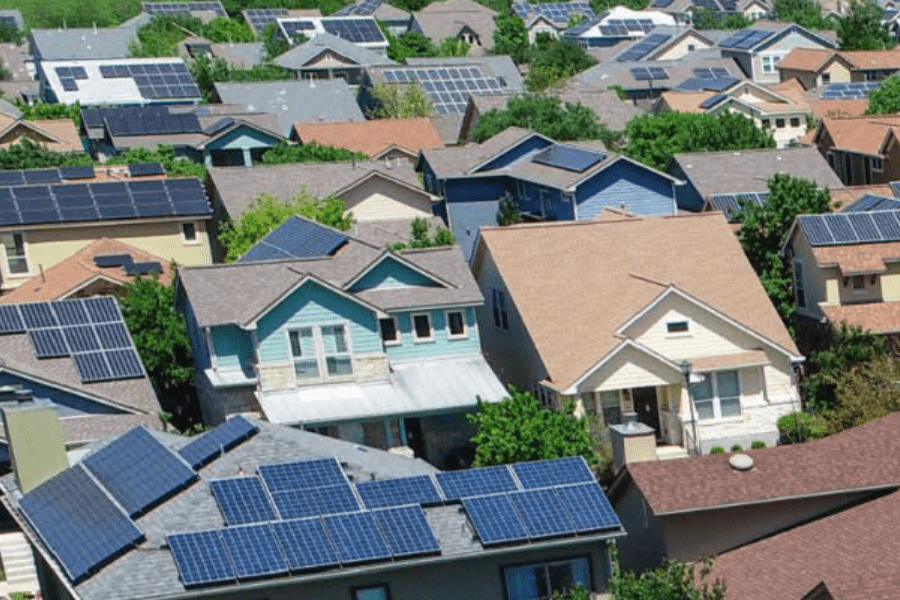Feb 16, 2024
The Good and Bad News: Canada’s Greener Homes Grant Incentive Program
Canada's Greener Homes Initiative has been a success, but it's now being shuttered. What's next for Canada's home performance industry?
By: Shawna Henderson

Great news: Canada’s Greener Homes Initiative $5000 Grant is a fantastic success!
Since the launch of the Greener Homes Program, the number of certified energy advisors has nearly doubled and home retrofit projects have increased four-fold.
According to the federal announcement, over 165,000 homeowners have received their $5000, and the grant program has supported over 75,000 jobs in construction, made-in-Canada manufacturing, home energy auditing, sales, clean technology and financial services.
In keeping with Canada’s climate change goals, the resulting emissions reduction under the program is similar to taking about 60,000 cars off the road.
Well, dang.
Not so great news: On Monday 5 February, the end of the Greener Homes Grant application process was officially announced, and on 12 February, it was shuttered. It was too successful!
The federally funded $40,000 interest-free Greener Home Loan program through CMHC is still running. Since June 2022, 53,000 of 62,000 loan applications have been approved.
So to be clear, it’s the GRANT that is no longer available. The headlines and articles make that distinction a bit blurry. The loan program still requires a pre/post retrofit energy assessment that must be paid for. A service fee and a loan are just a tad more challenging to sell than free grant money, though, right?
Read the whole announcement here. It’s important. Read the whole thing. There is good news in it.
However.
The closing of the federal grant program – with a promised next phase that has no details – is going to put a dent in a lot of people’s plans on both sides of the equation. This disruption has costs that will go well beyond the dollars saved or spent.
1. Homeowners across Canada lose a juicy incentive.
One that affects other provincial incentive programs tied into it. Enbridge’s HER+ program is the biggest example of this: HER+ rebate was up to $10,600, roughly half from the federal grant and half from the utility as part of its provincially regulated demand side management (DSM) plan.
NOTE: Homeowners who have already completed their initial energy assessment are still eligible for the grant.Homeowners in most regions have until 12 Feb to get an initial assessment done to be eligible for the grant. In Ontario, Enbridge closed the HER+ program to new applicants on 5 Feb.
2. The Canadian home performance industry loses momentum, again.
Having geared up, hired on, and trained up over the last 3 years, Energy Advisors, Service Organizations, insulation and air sealing companies, renovators, HVAC installers, financiers, and the whole supply chain now stand to lose some, most, or all of that investment.
Will it be two, three, six months, or more before we get details about the mysterious Phase 2 of the program?
How long can Service Organizations coast on follow-up assessments and stop-gap solutions? Will the fumes of the cancelled program carry them until the next round of funding shows up?
How many people will be gone, soured, and not coming back?
75,000 jobs.
When you cancel a national program and eliminate the market for workers, companies, and supply chains, those resources shift to new markets. Those resources are people and they need to shift.
Will these jobs all disappear because a $5000 grant is not available? Probably not. There’s the Heat Pump Grant program, and BC and Nova Scotia that have regional incentive programs that are still chugging along. It’s likely that Ontario will regroup and launch another program to meet DSM requirements.
Some of those jobs, and/or the businesses supplying those jobs, will disappear quickly; however, because small businesses can’t withstand huge blows to their revenue streams. Small businesses account for somewhere north of 70% of the residential construction industry. It’s going to leave a mark.
There’s Good News, Sort of…
The government recognizes that there needs to be continued support for retrofits.
From the announcement:
Building on the enormous success of the Canada Greener Homes Grant program and in response to the evolving needs of Canadians, the Government of Canada is currently adjusting the Greener Homes program. Under the next, new phase of the Canada Greener Homes Initiative, which will be a key part of the forthcoming Canada Green Buildings Strategy, the Government of Canada intends to offer support targeted to Canadian households with low-to-median incomes, so that cost-savings are available to those who need them most.
This is not the end of the road for EAs or for retrofits!!!
Got whiplash yet?
This touches every part of the industry and has the potential to sow distrust from homeowners. Hopefully the next phase of the program rolls out quickly. The federal budget is usually tabled in late March with funding announcements following shortly after that.
But right now, this disruption in the grant program is causing confusion for homeowners and hurting the industry. There will be hiring freezes and layoffs. There is a LOT of industry concern about the boom-bust cycle we’re going through (again).
We did this a decade ago.

Investment in Home Performance is a Always a Winner
The ecoEnergy program started in 2007 with a budget $160 million. It was wildly popular. When it ended in 2010, with a final budget of $745 million, 640,000 Canadians got an average grant of $1,500.
The program was re-upped for nine months in July 2011, but was abruptly cancelled two months early (with some portion of the $400 million yet to be allocated), with over 250,000 homeowners registered. It’s unclear as to how many people actually got the grant, but those who did, received an average $1,300.
Economically, nearly every grant program for retrofits generates billions of dollars in economic activity every year it’s in effect. NRCan has estimated that each dollar invested generates $5-6 in direct and indirect jobs.
Uncertainty is Never a Winner
The cancellation of the program in 2012 led to the loss of a good portion of the well-trained and fully qualified Energy Advisors and shuttered many of the companies they worked for. They never came back. Why would they, with no certainty that there was a career? A valuable skill set with a long-term career – certainty – is why the overarching plan in the Greener Homes Initiative included training and recruiting Energy Advisors over a 7 year period so that we could double the workforce. This disruption doesn’t help anyone.
The need for an army Energy Advisors hasn’t gone away. Energy audits are cooked into retrofit funding programs across the country: rebates, incentives, PACE loans, FCM funding, you name it, they rely on an EnerGuide for Houses Rating to benchmark and verify the reductions in energy and emissions to meet their targets.
Energy audits are a critical part of the ‘performance path’ to code compliance in new construction that will lead us to higher performance housing. They are an integral requirement of programs like Energy Star for New Houses™, and the Net Zero Label program.
The need for a national strategy on energy efficiency is also not going away. A long-term commitment to something – anything – consistent was obvious back in 2013. In a 2013 CBC article on the demise of the program, Tim Weis, with the Pembina Institute asked: “How do you take a program like this and transition it into a long-term housing strategy? That was never put out there…. When the program ended, it just ended.”
While the ecoEnergy program was successful, it reached roughly 10% of Canadian homeowners. The Greener Home Grant (v.1) was awarded to 165,000 homeowners. There are over 10 million homeowners in Canada. You do the math.
That’s not a national strategy.
Structuring grant programs to meet the needs of a bigger swath of Canadian homeowners is also crucial, which is why the next iteration of the grant is likely to be focussed on low- and medium-income households. This is also good news.
What it boils down to is this: we need a national strategy for consistent funding so that we can meet the needs of Canadians for comfortable houses with lower operating costs AND have a sustainable growth industry in retrofits.
We Were Once Rock Stars…
Canada created some foundational concepts in the world of building science, including the house-as-a-system concept, the prototype house that led to the R-2000 program and later, the basis for the passive house movement, the heat recovery ventilator (HRV), and the cold climate heat pump. We were/could still be rock stars in this area. But there’s an obvious reason why Canada generates great research, has a solid reputation for building science, and still doesn’t have a “home performance” industry like the US. There’s no overarching strategy or long-term policy frameworks.
The Home Performance with ENERGY STAR® is a national collaborative program between the U.S. Department of Energy and the U.S. Environmental Protection Agency that includes a network of 32 utility and nonprofit sponsors, and 1,300 home performance contractors. It was established in 2001. That’s 23 years of consistency.
That’s how you build an industry.
More from Efficiency Canada: https://www.efficiencycanada.org/wind-down-of-greener-home-grants/
This article originally appeared on the Blue House Energy blog and is printed here with permission.



